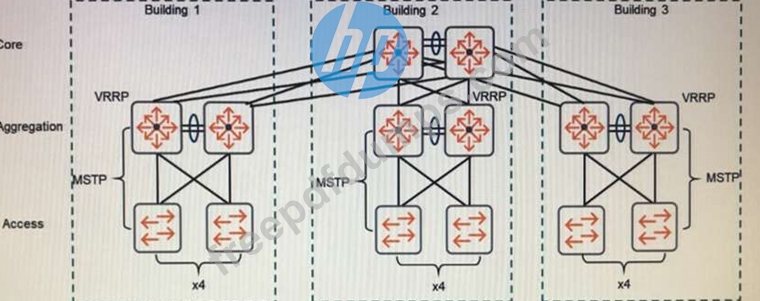HPE6-A47 Exam Question 1
A customer needs a networking solution that supports their Microsoft Skype for Business Unified Communications (UC) solution. The architect discovers that user wireless devices are Wi-Fi Multimedia (WMM) capable. Windows policies assign voice traffic DSCP 46 and video traffic DSCP 34.
Which potential issue should the architect explain to the customer about the default QoS settings?
Which potential issue should the architect explain to the customer about the default QoS settings?
HPE6-A47 Exam Question 2
An architect needs to choose between an Aruba Mobility Controller (MC) 7010 or 7024. Which сcustomer need indicates that the 7024 is a better choice than the 7010?
HPE6-A47 Exam Question 3
An architect needs to help a customer design a management and monitoring solution for an Aruba network in an airport. The solution consists of an Aruba Mobility Master (MM), Aruba 7210 MCs, Aruba AP-335s, and Aruba 5496R switches. The architect plans to recommend Aruba AirWare.
The airport has a high-client device turnover and many highly mobile devices. Which changes should the architect make to the recommended solution based on this characteristic?
The airport has a high-client device turnover and many highly mobile devices. Which changes should the architect make to the recommended solution based on this characteristic?
HPE6-A47 Exam Question 4
The corporation has deployed hundreds of RAP3 and all are working. A user has received a RAP3 from the IT department. At his home he connects the Ethernet port to his DSL modem. The corporate SSID is not advertises but an Instant SSID is. What could be the problem?
HPE6-A47 Exam Question 5
Refer to the exhibit.

A customer wants to replace the core and aggregation layer of an existing network. Currently the network routes between the aggregation layer and core, and uses the technologies shown in the exhibit.
The customer now wants to route at the core, instead of the aggregation layer, and extend some of the same VLANs in different buildings. However, the customer cannot eliminate the aggregation layer at this point.
What
should the architect recommend?

A customer wants to replace the core and aggregation layer of an existing network. Currently the network routes between the aggregation layer and core, and uses the technologies shown in the exhibit.
The customer now wants to route at the core, instead of the aggregation layer, and extend some of the same VLANs in different buildings. However, the customer cannot eliminate the aggregation layer at this point.
What
should the architect recommend?

